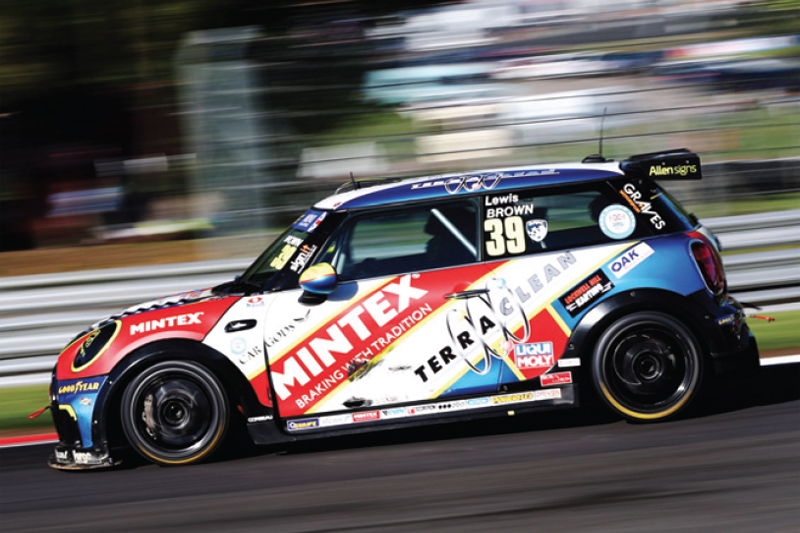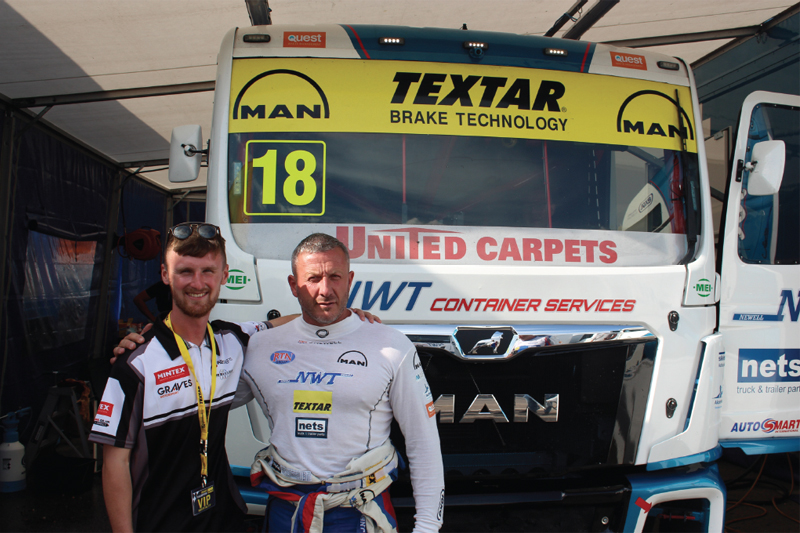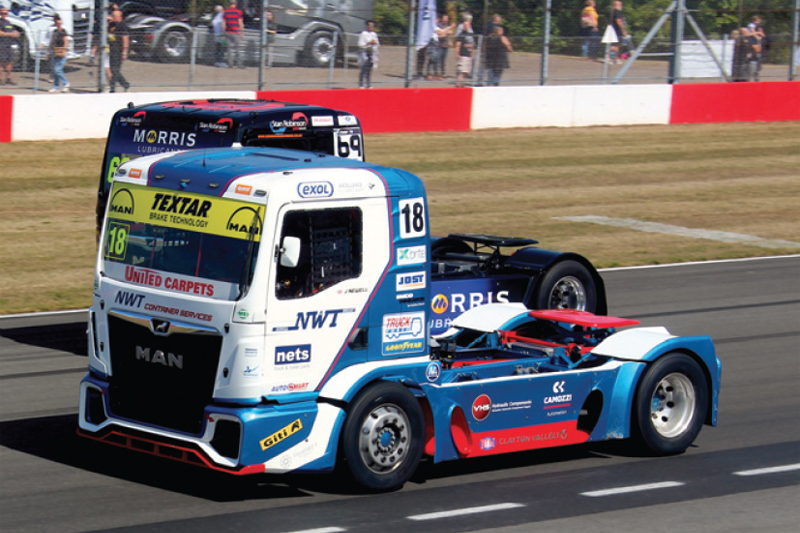
TMD Friction’s braking product lines continue to prove their credentials on the racing circuit, with its braking brand, Mintex, providing the stopping power to various racing and rallying championships nationwide, including Lewis Brown in the Quaife MINI Challenge.
TMD Friction’s CV braking brand, Textar, is also no stranger to high-octane circuit racing, with Textar emblazoned across the front of John Newell’s MAN racing truck in the British Truck Racing Championship (BTRC).
In a ‘little car meets large truck’ match up, Mintex-sponsored MINI Challenge racing driver, Lewis, and Textar-sponsored BTRC driver, John, sat down at the recent Convoy in the Park event to discuss how their braking applications are different.
The drivers will lean on the brakes differently, for instance, in order to find the right over or understeer balance on each track.
Lewis said: “On corner entry, in the MINI I will tap the brakes if the rear of the car steps out in order to force understeer under braking and get the car straightened up again.
John, meanwhile, said: “It’s different in the truck racing as the opposite applies; I’ll try and slide first, rather than coast into corners as some drivers would in the MINIs or touring cars. With the brakes still on I’ll then increase power, so as soon as we’re out of a sequence of bends I’m fully on power and off the brakes to get the best run down the straight as possible.”
In the Quaife MINI Challenge, a feeder series to the British Touring Car Championship, each MINI series III hatchback racing car runs Mintex F2 brake pads on the front axle, with Mintex M1144 pads on the rear. Conversely, in the BTRC, there is no specification on controlled, mandatory braking equipment – with all crews running any brand of brakes they want. On John’s MAN truck, though, the front pads are Textar’s high-performance pads, with trailer brakes on the rear axle.

The MINI Challenge features standard air cooling via large vents in the front bumper and aero package, with John’s specialist MAN racing truck benefitting from water cooling.
The cooling spray is applied manually to the centre of the brake disc, to keep brake temperatures as close to the 400°C optimum as possible. The water hitting the hot brakes creates a spectacle as the spray turns to steam under heavy braking, often into the first corner of the race.
TMD Friction said water cooling, in the high-octane setting of the racetrack, will prevent brake fade. As the rear brake force is gradually depleted as the race meeting goes on, John can overcome this by increasing the rear brake bias every few laps.
A significant driving dynamic affected by the brake setup is tyre temperature – something that can make or break handling.
John explained: “Not having the right brake temperature can mean you have no turn in. The brake heats the disc and elevates the pressure of the tyre, meaning it heats up quicker.”
Despite the differences in power and weight, a lap of Donington Park’s National layout will only see just over 10 seconds’ difference between Lewis’s MINI and John’s MAN truck.

The MAN weighs five times more than the MINI but delivers 1,200bhp to the MINI’s 280 – with top speeds of 100 and 130mph respectively. This means on a fast circuit, like Donington Park, a MINI JCW racing car will record a 1:12 lap time, with the MAN truck setting a 1:25.
On longer circuits, with more corners like Snetterton, the gap is similar, but relatively less when considering the lap distance, with the MINI setting a 2:02 to the truck’s 2:24.
In wet conditions, the MINI Challenge field will increase rear brake bias, to improve rear grip and set the car up to be more balanced; however, in truck racing, this isn’t a weapon in the arsenal John turns to, in order to be able to attack in the challenging conditions.
Lewis said: “When we brake, it will usually lift the rear wheels, so in wet weather this can cause a loss of grip. When we are racing in wet weather, we’re braking much sooner. So, with the bias set rearward, the car handles much better and won’t be putting weight onto its nose and maintain rear grip.”







